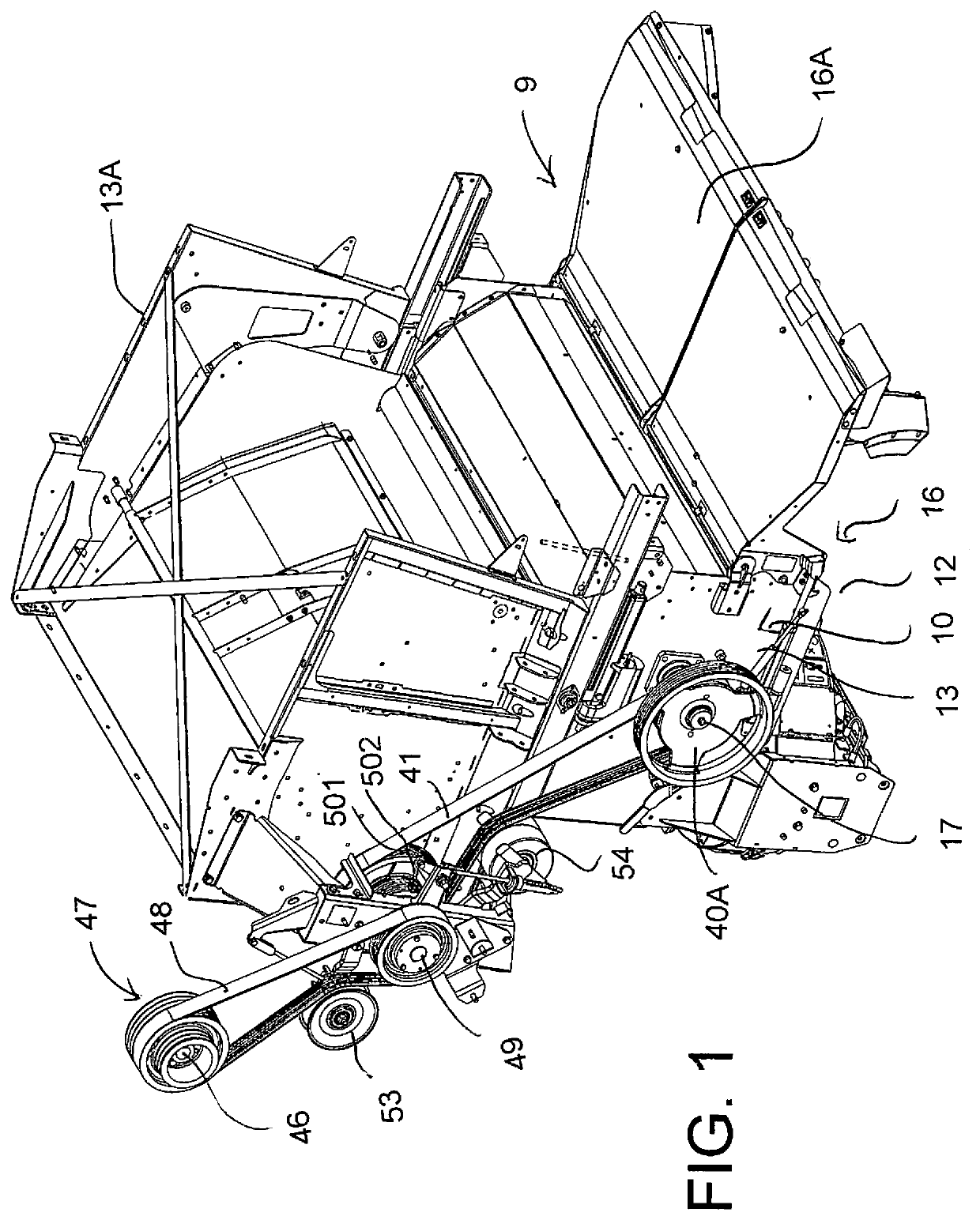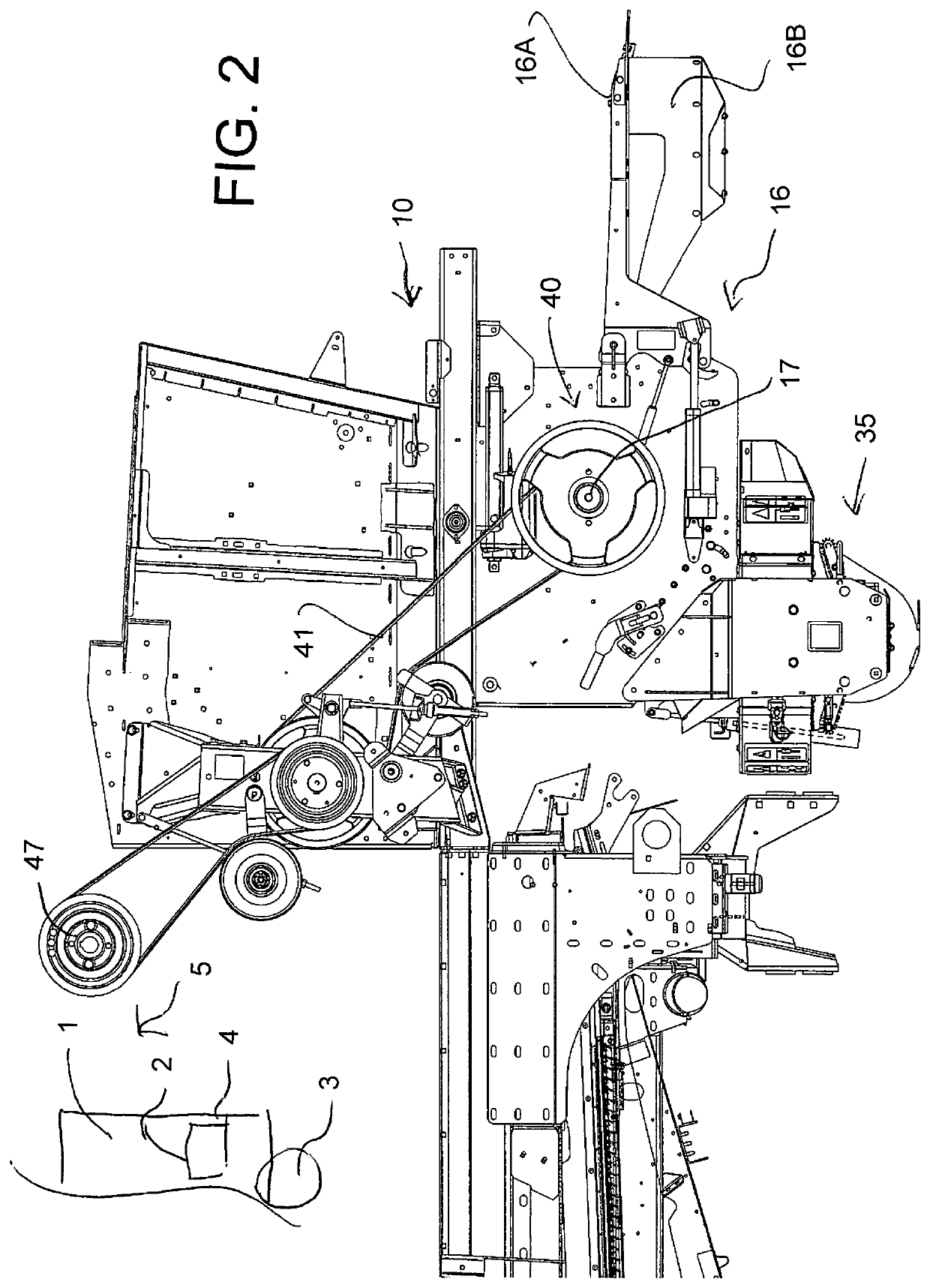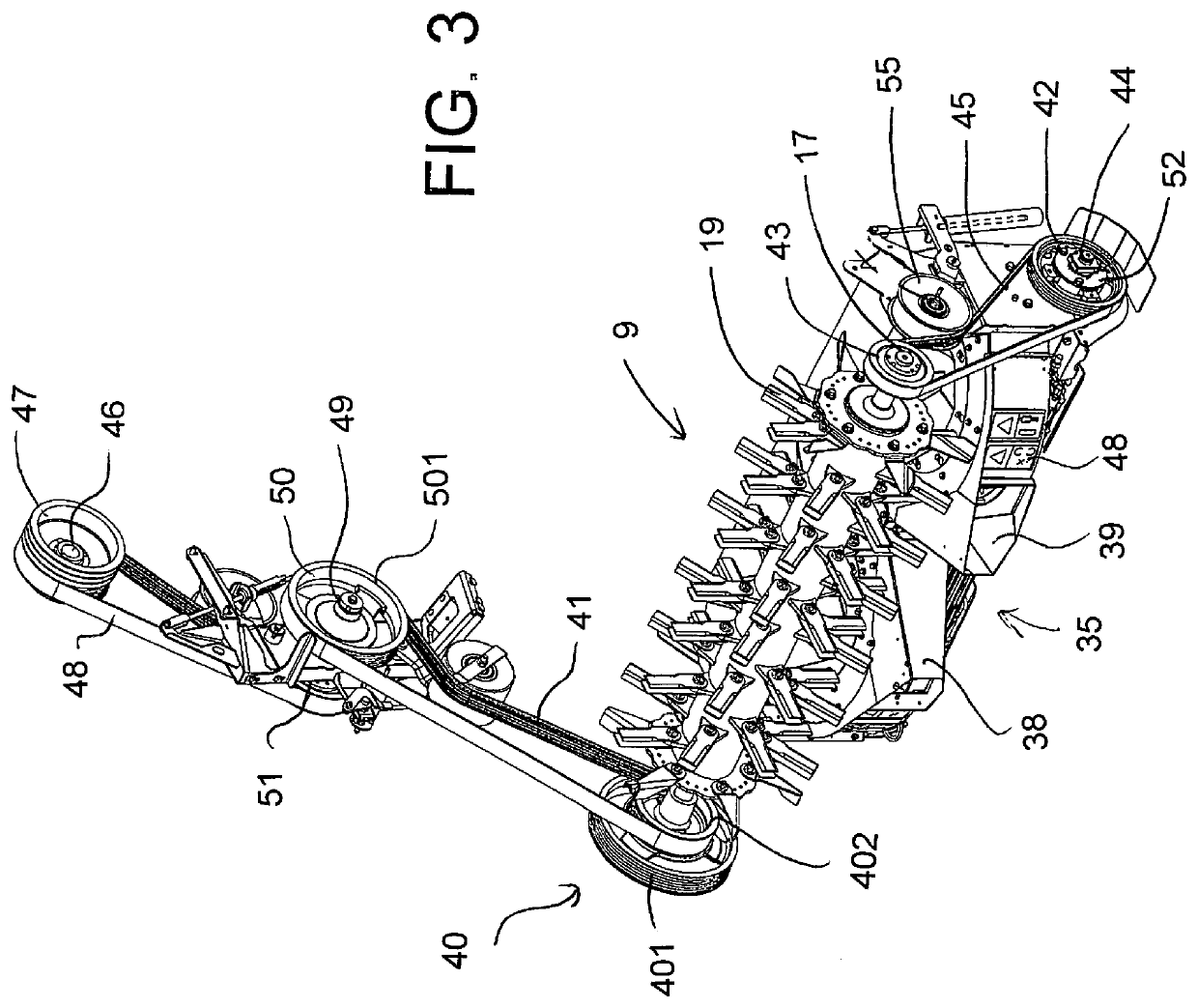Belt Drive for a Weed Seed Destructor of a Combine Harvester
a combine harvester and drive technology, applied in mowers, agriculture tools and machines, agriculture, etc., can solve the problems of reducing the life and performance of the belt drive, reducing the capacity of the drive, and reducing the life of the belt. the effect of load reduction
- Summary
- Abstract
- Description
- Claims
- Application Information
AI Technical Summary
Benefits of technology
Problems solved by technology
Method used
Image
Examples
Embodiment Construction
[0080]The combination of straw management system and weed seed destruction system is shown generally in for example U.S. Pat. No. 10,495,369 issued Dec. 3, 2019, the disclosure of which is incorporated herein by reference, to which reference may be made for further detail of features described only generally herein.
[0081]The apparatus herein is conventionally mounted on a combine harvester 1 carried on ground wheels 3 and including harvesting components of a conventional nature the rearmost one of which is the sieve 2 which discharges chaff and discarded seeds including weed seeds to the rear edge 4 of the sieve.
[0082]The combine harvester includes a chopper and discharge arrangement 9 shown in FIGS. 1 and 6 is basically as shown in U.S. Pat. No. 6,840,854 issued Jan. 11, 2005 of Redekop, the disclosure of which is incorporated herein by reference to which reference may be made for further detail of features described only generally herein. The chopper thus comprises a housing 10 de...
PUM
 Login to View More
Login to View More Abstract
Description
Claims
Application Information
 Login to View More
Login to View More - R&D Engineer
- R&D Manager
- IP Professional
- Industry Leading Data Capabilities
- Powerful AI technology
- Patent DNA Extraction
Browse by: Latest US Patents, China's latest patents, Technical Efficacy Thesaurus, Application Domain, Technology Topic, Popular Technical Reports.
© 2024 PatSnap. All rights reserved.Legal|Privacy policy|Modern Slavery Act Transparency Statement|Sitemap|About US| Contact US: help@patsnap.com










